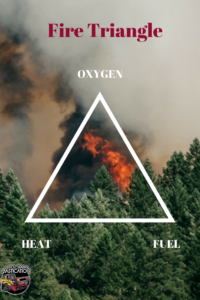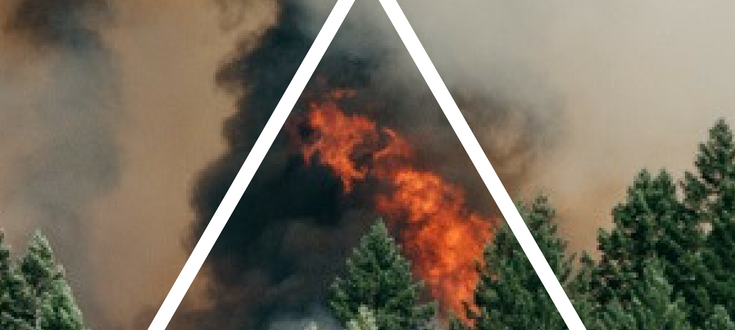Physical Properties of Wildifres
Wildfires are devastating. They don’t just affect the homes of people, but the homes of the wildlife. These fires can destroy miles of beautiful forestry and put lives in danger. It’s important to 
It takes three items to make a wildfire happen. The ignition source needs to come into contact with a combustible material, and to spread, it needs enough heat and oxygen. In cases of wildfire, the ignition source usually comes into contact with some vegetation and that spreads rapidly.
The Heat Needed for a Fire
Fires need the right temperature to burn and spread. At 450F, wood will release flammable gases, but it’s not until 720F that the wood will smoulder. It ignites once it reaches 1,000F.
Wood and other flammable materials in the local area can be heated before being caught by the fire. This is through heat transfer, allowing the materials to heat to more than 1,000F. When the ignition source reaches the wood, it’s already hot enough to keep the fire going.
Damp sections or places with plenty of water will help to reduce the risk of a fire igniting. The dampness keeps the wood temperatures cooler, meaning higher heat is needed to start the fire.
Healthy plants are less likely to catch fire because of this, and it’s why dead, dying, or diseased trees need to be removed as they are perfect for igniting and spreading a fire. Places with a lot of drought are also more likely to face wildfires.
The Speed of Travel
The speed that a wildfire will travel does depend on the wind and fuel around it. In optimum conditions, the fires can spread at a rate of 6.7mph in forests. In grasslands, that speed is up to 14mph. With winds, it’s possible for some of the debris to fly up in the air, allowing the fire to jump sections, helping to spread the fire quicker.
With strong winds, the debris is pushed further. This is often something seen in wildfires in recent years, with firefighters battling against the elements. A change in wind direction is often the break firefighters need to put the fire out.
Debris in the Area
The fire needs a fuel source. Once it runs out of the fuel source, it can’t keep burning. However, grasslands, shrubs, and even housing structures can offer the fire the fuel source that it needs.
Creating a defensible zone around your home isn’t a guarantee if the debris flies into the air and helps the fire to jump, but it will help to reduce the risk of a fire happening. It can help contain the spread of a wildfire.
For questions about fire mitigation around your house, feel free to get in touch with us at (719)400-9104 and we will be happy to answer any of your questions about fire mitigation methods.
